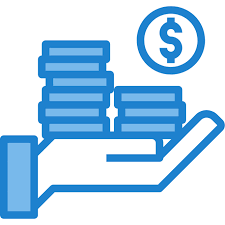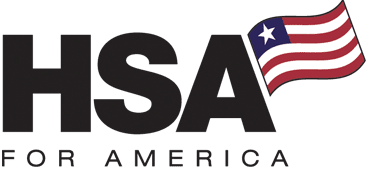Understanding Obamacare Subsidies


A subsidy is a benefit given by the government in the form of a tax credit, intended to lessen the cost of individual and family ACA-qualified health insurance plans. The amount of your healthcare subsidy is determined by both annual income and household size.
Until recently, ACA subsidies were only available to individuals earning less than 400% of the federal poverty level (FPL). In 2025, these Affordable Care Act subsidies were extended to include individuals and families who earn more than 400% of FPL. The subsidies were also increased for people at lower incomes.
What is the Federal Poverty Level?
In 2025, the Federal Poverty Level, or FPL, is $15,650 for individuals. This number goes up with each additional family member, as high as $54,150 for a family of 8.
FPL is calculated by the Department of Health and Human Services (HHS) and is used to determine Obamacare subsidy eligibility, Medicaid, CHIP (Children’s Health Insurance Program), and other health insurance coverage options.
Premium Assistance Subsidies
Premium Assistance Subsidies (you may also hear them called Premium Tax Credit Subsidies, or advanced premium tax credits) can help with reducing your monthly premium – the monthly cost of your health insurance plan. These subsidies are calculated on a sliding scale based on your income, and as of 2025, are now available to individuals who earn more than 400% of FPL.
You can receive the credit in advance or wait to claim it on your tax returns as a refundable tax credit, offsetting what you owe the IRS.
If You Earn 138% FPL or Less: You Could Qualify for Medicaid
Eligibility rules vary by state, but if your modified adjusted gross income (MAGI) is 138% FPL or less, you could qualify for Medicaid coverage through your state. This income limit could be different where you live; Check Medicaid.Gov to learn more about your state’s rules.
If You Earn Between 138% FPL and 150% FPL: Silver Plan with $0 Premium and Reduced Deductibles
If your annual income is 150% FPL or less ($48,225.00 for a family of 4) then you can qualify for a $0 premium benchmark Silver-tier plan. (“Benchmark” means the Silver plan in your area with the 2nd lowest cost).
If You Earn Between 150% FPL and 200% FPL: Pay No More than 2% of Your Income
Your Obamacare subsidy will cap your monthly premium at no more than 2% of your annual income, making coverage through the health insurance marketplace more affordable.
If You Earn Between 200% and 400% FPL: Tax Credit to Reduce Your Premium
Premium tax credits are available on a sliding scale up to 400% FPL. For example:
- 200% FPL: ($65.50/month)
- 400% FPL: ($361.50/month)
These healthcare subsidies make health insurance plans more accessible for individuals and families.
If You Earn More Than 400% FPL: Pay No More than 8.5% of Income for Benchmark Plan
Thanks to expanded Obamacare subsidy eligibility, even those earning more than 400 of the federal poverty level can qualify. Your insurance premium for a benchmark Silver plan is now capped at 8.5% of your annual household income.
All individuals earning 138% FPL and above may qualify for an Affordable Care Act subsidy. The exact amount depends on your annual income, household size, and adjusted gross income (MAGI).
Even high earners may receive a healthcare subsidy that limits the cost of a marketplace plan to 8.5% of income.
| FEDERAL POVERTY LEVEL GUIDELINES FOR THE 48 CONTIGUOUS STATES AND THE DISTRICT OF COLUMBIA |
|||||||
|---|---|---|---|---|---|---|---|
| Household Size | 100% | 138% | 150% | 200% | 250% | 300% | 400% |
| 1 | $15,650 | $21,597 | $23,475 | $31,300 | $39,125 | $46,950 | $62,600 |
| 2 | $21,150 | $29,187 | $31,725 | $42,300 | $52,875 | $63,450 | $84,600 |
| 3 | $26,650 | $36,777 | $39,975 | $53,300 | $66,625 | $79,950 | $106,600 |
| 4 | $32,150 | $44,367 | $48,225 | $64,300 | $80,375 | $96,450 | $128,600 |
| 5 | $37,650 | $51,957 | $56,475 | $75,300 | $94,125 | $112,950 | $150,600 |
| 6 | $43,150 | $59,547 | $64,725 | $86,300 | $107,875 | $129,450 | $172,600 |
| 7 | $48,650 | $67,137 | $72,975 | $97,300 | $121,625 | $145,950 | $194,600 |
| 8 | $54,150 | $74,727 | $81,225 | $108,300 | $135,375 | $162,450 | $216,600 |
| 9 | $59,650 | $82,317 | $89,475 | $119,300 | $149,125 | $178,950 | $238,600 |
| 10 | $65,150 | $89,907 | $97,725 | $130,300 | $162,875 | $195,450 | $260,600 |
2025 Federal Poverty Guidelines
Federally facilitated marketplaces will use the 2025 guidelines to determine eligibility for Medicaid and CHIP. Health insurance subsidies for 2025 will be calculated using 2025 FPL guidelines.
HSA for America can help you determine how much your subsidy can be, and whether you qualify for other cost reductions. Purchasing your plan through HSA for America will cost you no more than going directly through the insurance company or a state-sponsored “exchange,” but will make the process so much easier, and we will provide the expertise and peace of mind you won’t find anywhere else.
Your premium tax credit is based on:
- Your annual income and household size
- The cost of the benchmark Silver plan in your area
- The amount you’re expected to pay based on Obamacare income levels for subsidies
The difference is your advanced premium tax credit, which can be applied toward any health insurance coverage, including Bronze, Gold, or Platinum plans.
If you qualify for a subsidy, remember that even though it is calculated based on the costs of Silver plans, it can usually be applied to a lower-cost Bronze plan—resulting in much lower premiums than shown above.
Even though the subsidy is based on the cost of a Silver plan, you can still apply that same subsidy to a Bronze, Gold, or Platinum plan. You will need to carefully estimate your 2025 earnings. If you earn more than estimated, you might have to repay all or part of the excess premium subsidy or cost-sharing benefit you should not have received. Contact us at 1-800-913-0172; we can calculate what your premium subsidy will be in seconds, not weeks like the health exchange.
Many marketplace insurance enrollees can qualify for a Cost-Sharing Reduction or CSR. This discount can further decrease the amount that you’re paying in deductibles, copayments, and coinsurance. It can also lower your out-of-pocket maximum.
If you qualify for Cost-Sharing Reduction, you must be enrolled in a Silver-tier plan in order to get the savings.
- Cost-Sharing Reductions are available to enrollees with household incomes between 139% FPL and 250% FPL. (For states that have not expanded Medicaid, the lower limit is set at 100% FPL.)
- Cost-Sharing subsidies are only applicable to either of the two lowest cost Silver-tier plans
- Your Personal Benefits Manager can determine if you qualify for a Cost-Sharing Reduction at the same time they calculate your subsidy.
- If you do qualify for Cost-Sharing, your savings are automatically applied to your Silver plan as you enroll.
How Much Money Will I Save?
If you qualify for CSR, you may see:
- Lower deductibles and copays
- Reduced out-of-pocket maximums
- Lower overall healthcare expenses
In some cases, CSR can reduce a physician copay to just $5–$10.
| % of FPL | Deductible overall | Deductible for brand-name drugs | Out-of-pocket limit | Primary care copayment | Specialist copayment | Preventive care | Tests |
|---|---|---|---|---|---|---|---|
| Up to 150 | $0 | $0 | $3,050 for individuals/ $6,100 for families |
$3 | $5 | $0 | $3 and $5 |
| 150 to 200 | $500 for individuals/ $1,000 for families |
$50 for individuals/ $100 for families |
$3,050 for individuals/ $6,100 for families |
$15 | $20 | $0 | $15 and $20 |
| 200 to 250 | $1,500 for individuals/ $3,000 for families |
$250 for individuals/ $500 for families |
$7,350 for individuals/ $14,700 for families |
$40 | $50 | $0 | $40 and $50 |
Can I Receive a Subsidy If My Insurance Is Through My Employer?
The Affordable Care Act mandates that employers with 50 or more workers must provide adequate and affordable coverage.
This means offering plans that:
- Meet the Minimum Value Standard: Employer-sponsored plans are required to pay a minimum of 60% of the total cost of medical services.
- Meet the Affordability Test: Your group plan is considered “affordable” only if your annual premiums are less than 8.5% of your annual income.
If your employer-sponsored plan does not meet both of these requirements, then you can still qualify for a health insurance subsidy for a marketplace plan. This will require opting out of your group coverage and enrolling in a new plan
How Does My Marriage Status Affect My Subsidy?
People who file their taxes as married, but who file separately, do not qualify for subsidies under the new law*. For some couples, filing separately can lead to a lower tax bill. However, married couples must file jointly in order to receive a health insurance subsidy under the new law.
This can present problems for married couples who sign up for a policy and receive a subsidy but then separate prior to actually filing their taxes. In this scenario, the couple would most likely need to repay the subsidy.
*There are some exceptions to this rule for victims of spousal abandonment and domestic abuse.
What Happens if I Overestimate My Yearly Income?
For many people, accurately estimating annual incomes can be difficult. If you are self-employed, change jobs mid-year, or have inconsistent paychecks, you may find at tax time that you’ve received more of an advance premium tax credit than you should have received based on what you actually ended up earning. This means you will be responsible for paying back a portion of the overpayment.
If I Overestimate my Income, How Much Will I Owe?
There is a cap based on your income level that limits the amount you will have to repay (or what will be taken out of your tax return). This cap is also calculated using the Federal Poverty Level (FPL).
2025 Subsidy Tax Credit Repayment Caps:
- <200% FPL: $375 single / $750 family
- <300% FPL: $950 single / $1,900 family
- <400% FPL: $1,575 single / $3,150 family
- >400% FPL: No repayment cap
Note that if you’re earning 400% FPL or above, there is no repayment cap. That means that you will be responsible for paying back the entire overpayment.
Premium tax credits are determined based upon the cost of the “benchmark plan” or second least expensive Silver health plan in an area. If the cost of this plan changes, so do premium tax credits. If you auto-renew your 2024 health plan, your advanced premium tax credit for 2025 will remain the same as it was in 2024 and will be reconciled when you file your 2025 taxes. What does this mean for you?
It means that if the cost of the benchmark plan goes down in 2025, you will receive a higher premium tax credit than you are entitled to and will owe the IRS a refund at tax time. If the cost of the benchmark plan goes up, you will have to pay the difference in premium, which could be anywhere from 50 to 100 percent higher than you are currently paying. Because of the changes in benchmark plans, it’s likely you can save money by switching health plans.
To ensure you remain in the best value plan and receive the proper advanced premium tax credit, it’s crucial that you schedule a time to meet with your HSA for America Personal Benefits Manager to review your anticipated income for 2024, have your premium tax credit re-calculated and review your plan options for 2025.
What If I Am Below 138 Percent FPL And Do Not Qualify for a Subsidy?
If your income is below $21,597 for an individual or $44,367 for a family of four, you will qualify for Medicaid in many states. In most other states, only those below 100 percent of the federal poverty level will qualify for Medicaid. Anyone with incomes greater than 138 percent of the 2025 FPL will receive subsidies to help pay for an individual or family health insurance policy.
States Offering Medicaid for Incomes 100-133 percent of Federal Poverty Level (FPL) |
||
|---|---|---|
| Arizona | Maryland | New Mexico |
| California | Massachusetts | North Dakota |
| Colorado | Michigan | Ohio |
| Connecticut | Minnesota | Oregon |
| Delaware | Missouri | Rhode Island |
| District of Columbia | Montana | Vermont |
| Florida | Nevada | Washington |
| Hawaii | New Jersey | West Virginia |
| Illinois | New York | |
| Kentucky | New Hampshire | |
Health care reform is driving insurance premiums up, so it is important that you take advantage of every opportunity you have to lower your costs. Contributing to a health savings account (HSA) has many financial benefits. It lowers your adjusted gross income so you may qualify for a subsidy or a greater subsidy.
Just look at the chart above, and if you are close to the tax credit limits, consider contributing to your HSA in order to minimize your net costs. HSA for America is ready to walk you through your best options by calculating your premium and eligible subsidy at the moment you begin your application.
Looking for more information on the Premium Tax Credit? You can get it straight from the source at the IRS.Gov PTC Questions and Answers page.
Want to save even more on healthcare? Subscribe to Maximize Your HSA, our comprehensive monthly newsletter that is packed with tips, tricks, and tutorials to cut your rates, boost your investing power, and generate big wealth before retirement.
Making sense of the Affordable Care Act can seem impossible without a trusted Personal Benefits Manager to guide you through the process of choosing the right insurance plan for you and your family. HSA for America is here to simplify the process, answer your questions, and help make complicated health care decisions easier to understand—at absolutely no additional cost to you.
Start maximizing your health care savings now by speaking with an HSA for America Personal Benefits Manager today at 800-913-0172.
Available Plans | HSA Info | Healthshare Info | FAQS | Blog | News | About Us | Contact Us | Privacy Policy | Agents Needed

Contact Information:
1001-A E. Harmony Rd #519 Fort Collins, CO 80525
800-913-0172
info@HSAforAmerica.com
Disclaimer: All information on this website is relayed to the best of the Company's ability, but does not guarantee accuracy. Information may be out of date. The content provided on this site is intended for informational purposes only and does not guarantee price or coverage. This site is not intended as, and does not constitute, accounting, legal, tax, and/or other professional advice. Determination of the actual price is subject to the Carriers.
